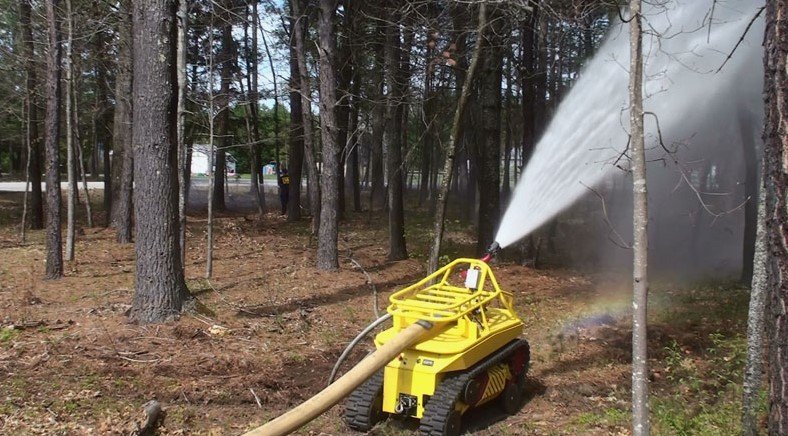The role of a firefighter has evolved significantly over the years. What was once considered a profession reliant solely on physical strength and bravery has transformed into a field requiring specialized skills, particularly in the realm of technology. Firefighters today must not only be physically fit and mentally resilient but also adept at using advanced tools and technologies that are revolutionizing how training and real-life emergencies are handled. The importance of acquiring technology skills in firefighter training cannot be overstated, as it is these skills that prepare them to face the challenges of modern-day firefighting effectively.
The Role of Technology in Firefighter Training
Technology has become an indispensable part of firefighter training programs across the globe. Traditional training methods, while still valuable, are now supplemented with advanced technologies to simulate real-world scenarios more effectively. Firefighters are being trained in environments where cutting-edge tools and software mimic real-life fire emergencies, allowing them to prepare for diverse situations without the risks associated with live training. This technological integration not only ensures a higher level of preparedness but also fosters safer and more efficient firefighting practices.
Simulations powered by virtual reality (VR) and augmented reality (AR) offer immersive training experiences, placing firefighters in lifelike emergency scenarios without endangering lives or property. These technologies create controlled environments where firefighters can practice strategies, refine their responses, and develop situational awareness. Such advancements are particularly useful for preparing firefighters to deal with hazardous materials, structural collapses, and large-scale industrial fires.
Developing Proficiency in Drones and Robotics
One of the most significant technological innovations in firefighting is the use of drones and robotic systems. Drones equipped with high-definition cameras and sensors are increasingly used to assess fire situations from the air. They provide real-time visuals and data, enabling firefighters to evaluate the scope of a fire, identify its origin, and pinpoint areas requiring immediate attention. This capability is particularly useful for accessing hard-to-reach locations, such as dense forests, industrial complexes, or multi-story buildings.

Robotic systems are also becoming invaluable tools in high-risk scenarios. For instance, firefighting robots equipped with thermal imaging cameras and water cannons can enter hazardous environments where human entry would be too dangerous. Firefighters must undergo extensive training to learn how to operate these drones and robots effectively. They need to understand how to interpret the data gathered by these machines and make quick, informed decisions based on that information.
Thermal Imaging and Its Role in Firefighting
Thermal imaging technology has transformed the way firefighters approach rescue operations. These cameras can detect heat signatures, enabling firefighters to locate trapped individuals in smoke-filled environments or identify fire hotspots that are not visible to the naked eye. The ability to operate and interpret data from thermal imaging devices is now an essential skill for modern firefighters.
In training, firefighters are taught how to use thermal imaging cameras to enhance their situational awareness. They learn how to scan rooms and structures efficiently, identify escape routes, and prioritize rescue operations based on heat patterns. This training ensures that they can utilize thermal imaging technology to its fullest potential during real emergencies, ultimately saving lives and minimizing damage.
Mastering Incident Reporting and Data Analysis
The increasing reliance on data in firefighting has made incident reporting and data analysis critical skills for firefighters. Modern firefighting involves gathering and analyzing real-time data to make informed decisions quickly. For example, fire behavior predictions based on data analysis can guide evacuation procedures, resource allocation, and containment strategies.
Firefighters are trained to use specialized software for incident reporting and data management. This includes learning how to input accurate data, analyze trends, and generate reports that can be used for post-incident evaluations. The ability to manage and interpret data not only improves the efficiency of firefighting operations but also aids in preventing future incidents through better planning and resource management.
Advancing Communication through Technology
Effective communication is a cornerstone of successful firefighting operations. With the advent of mobile technologies and advanced communication systems, firefighters now have access to tools that enable seamless coordination during emergencies. Training programs emphasize the use of real-time communication platforms, mobile applications, and incident management systems to ensure that every team member is informed and aligned.
Firefighters learn to operate two-way radios, emergency communication networks, and mobile apps designed for first responders. These tools help them stay connected with their team, receive updates on evolving situations, and coordinate their efforts more effectively. This integration of technology into communication processes ensures a more cohesive and efficient response to emergencies.
Utilizing Geographic Information Systems (GIS)
Geographic Information Systems (GIS) are becoming increasingly important in firefighting, especially for mapping fire-prone areas and planning evacuation routes. Firefighters are trained to use GIS software to analyze terrain, predict fire behavior, and plan their strategies accordingly. GIS data can provide valuable insights that enhance decision-making during emergencies.
In training sessions, firefighters are introduced to the basics of GIS technology, including how to interpret geospatial data and create maps that highlight critical information such as escape routes, fire barriers, and water sources. By mastering GIS, firefighters are better equipped to handle complex fire scenarios that require meticulous planning and execution.
Continuous Learning in Firefighting Technology
The field of firefighting is constantly evolving, with new technologies being developed to improve safety and efficiency. To keep pace with these advancements, firefighters must commit to continuous learning and professional development. Regular workshops, certifications, and hands-on training sessions ensure that firefighters remain proficient in the latest tools and techniques.
Fire departments must also invest in ongoing education programs that emphasize the integration of emerging technologies into firefighting practices. By fostering a culture of continuous improvement, firefighters can stay ahead of the curve and maintain their readiness to tackle any emergency.
How Technology is Shaping the Future of Firefighting
The integration of technology into firefighter training is not just a trend—it is the future of firefighting. From VR simulations and thermal imaging to drones and GIS technology, these tools are revolutionizing how firefighters prepare for and respond to emergencies. By mastering these skills, firefighters can enhance their performance, improve safety, and save more lives.
Technology has made firefighting more precise, efficient, and effective. It has also elevated the standards of training, ensuring that firefighters are better equipped to handle the complex challenges of modern emergencies. As the firefighting industry continues to embrace technological innovations, the need for skilled professionals who can leverage these tools will only grow.




